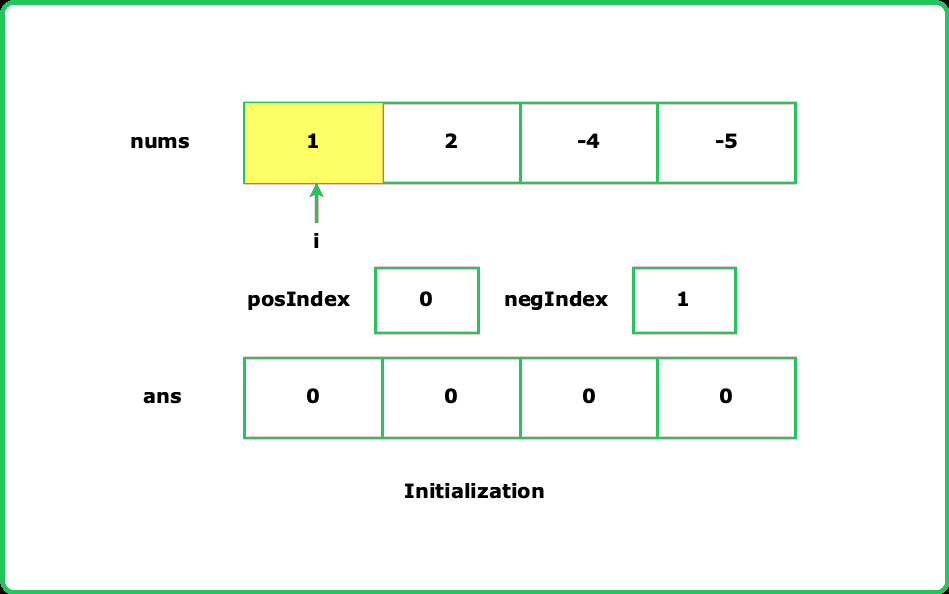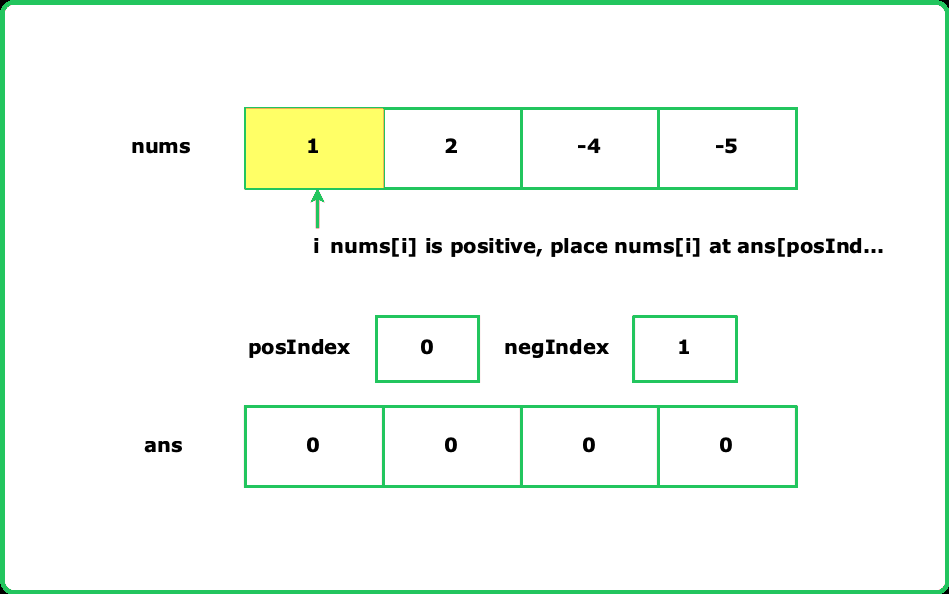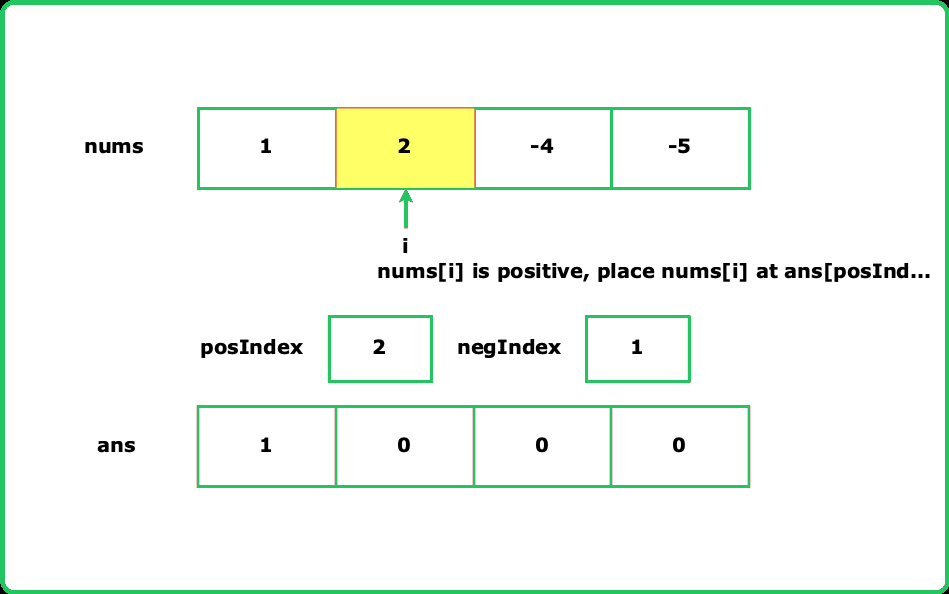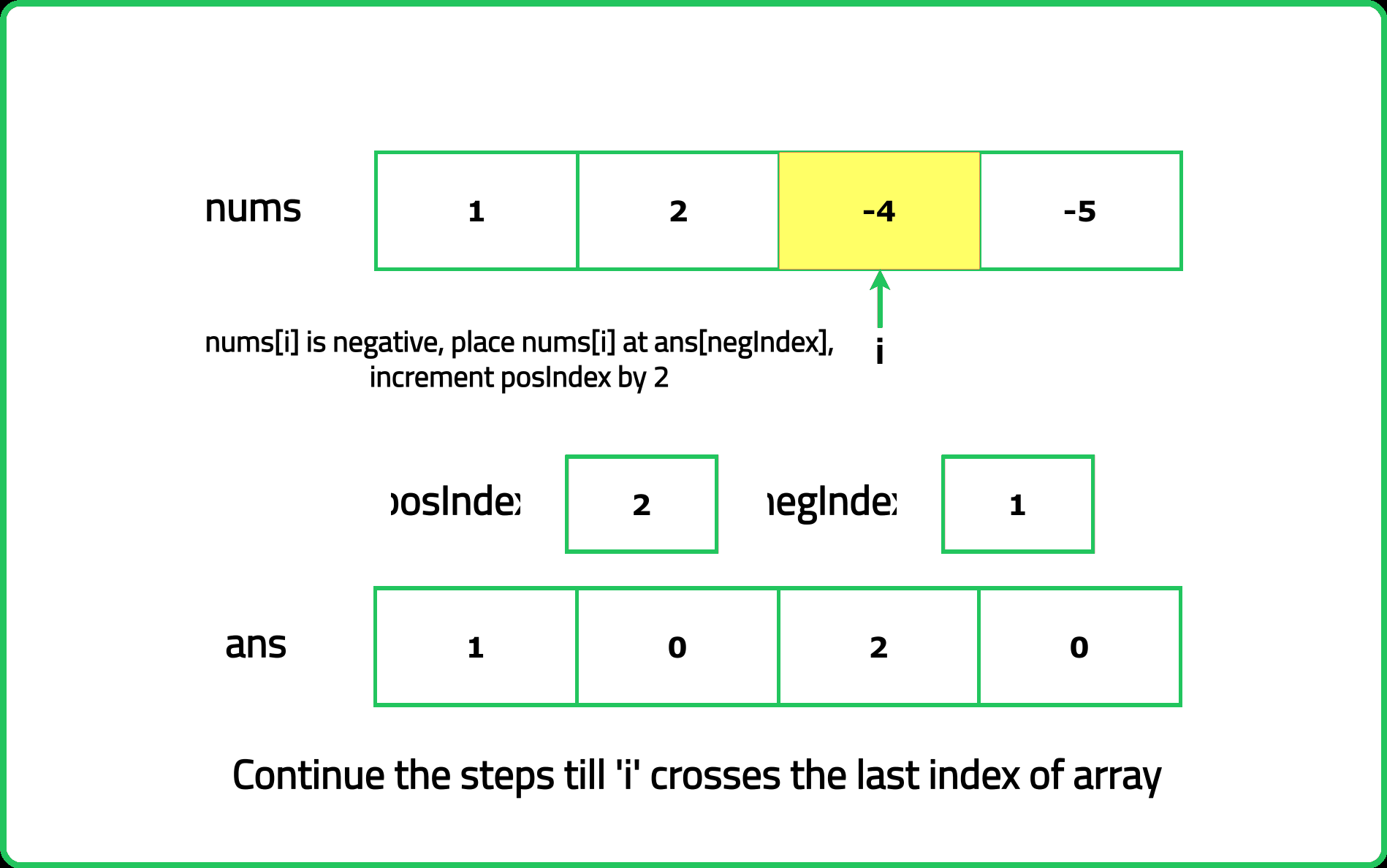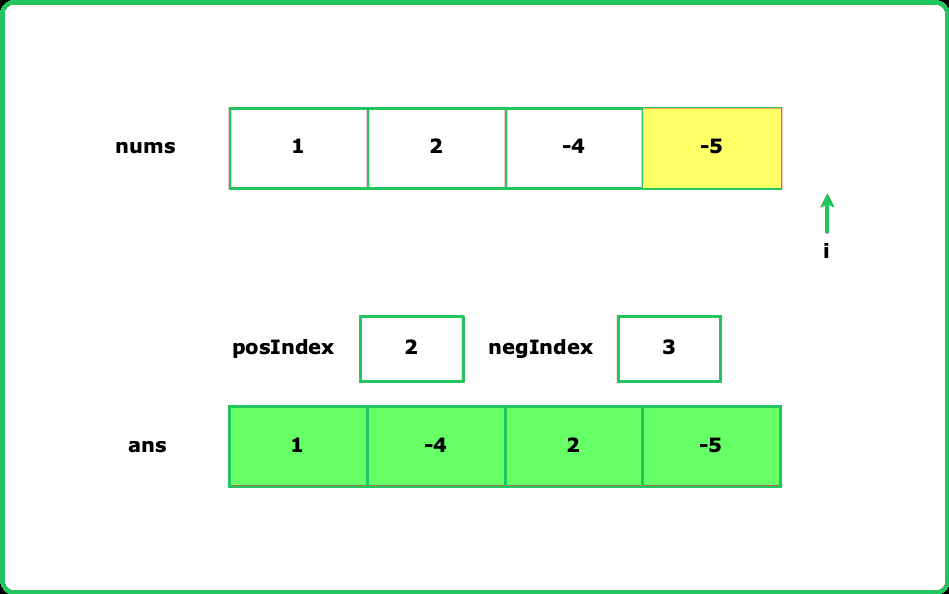Rearrange array elements by sign
Arrays
FAQs(Medium)
Medium
- One practical application of this problem can be found in the financial software industry, specifically in the domain of portfolio management
- There, the sequence and proportion of positive (profit) and negative (loss) financial transactions is crucial
- Algorithms similar to this problem can be used to analyze transaction data, where consecutive transactions follow a pattern of gain and loss, helping a financial analyst to understand and predict the market dynamics
Given an integer array nums of even length consisting of an equal number of positive and negative integers.Return the answer array in such a way that the given conditions are met:
- Every consecutive pair of integers have opposite signs.
- For all integers with the same sign, the order in which they were present in nums is preserved.
- The rearranged array begins with a positive integer.
Examples:
Input : nums = [2, 4, 5, -1, -3, -4]
Output : [2, -1, 4, -3, 5, -4]
Explanation: The positive number 2, 4, 5 maintain their relative positions and -1, -3, -4 maintain their relative positions
Input : nums = [1, -1, -3, -4, 2, 3]
Output : [1, -1, 2, -3, 3, -4]
Explanation: The positive number 1, 2, 3 maintain their relative positions and -1, -3, -4 maintain their relative positions
Input: nums = [-4, 4, -4, 4, -4, 4]
Constraints
- 2 <= nums.length <= 105
- 1 <= | nums[i] | <= 104
- nums.length is an even number.
- Number of positive and negative numbers are equal.
Hints
- Extract positive and negative integers into two separate arrays while preserving their relative order. Iterate through the positive and negative arrays simultaneously, alternately adding elements from each to the result array.
- Use two indices to track the position in the positive and negative arrays during merging.
Company Tags
Micron Technology
Etsy
Intel
Swiggy
ARM
Reddit
Cerner
Splunk
Bungie
Pinterest
Optum
Roche
Square
Lyft
Rakuten
GE Healthcare
Wayfair
OYO Rooms
Bloomberg
Activision Blizzard
Ernst & Young
Johnson & Johnson
Deloitte
Red Hat
IBM
TCS
Cognizant
Accenture
Infosys
Capgemini
Wipro
Amazon
